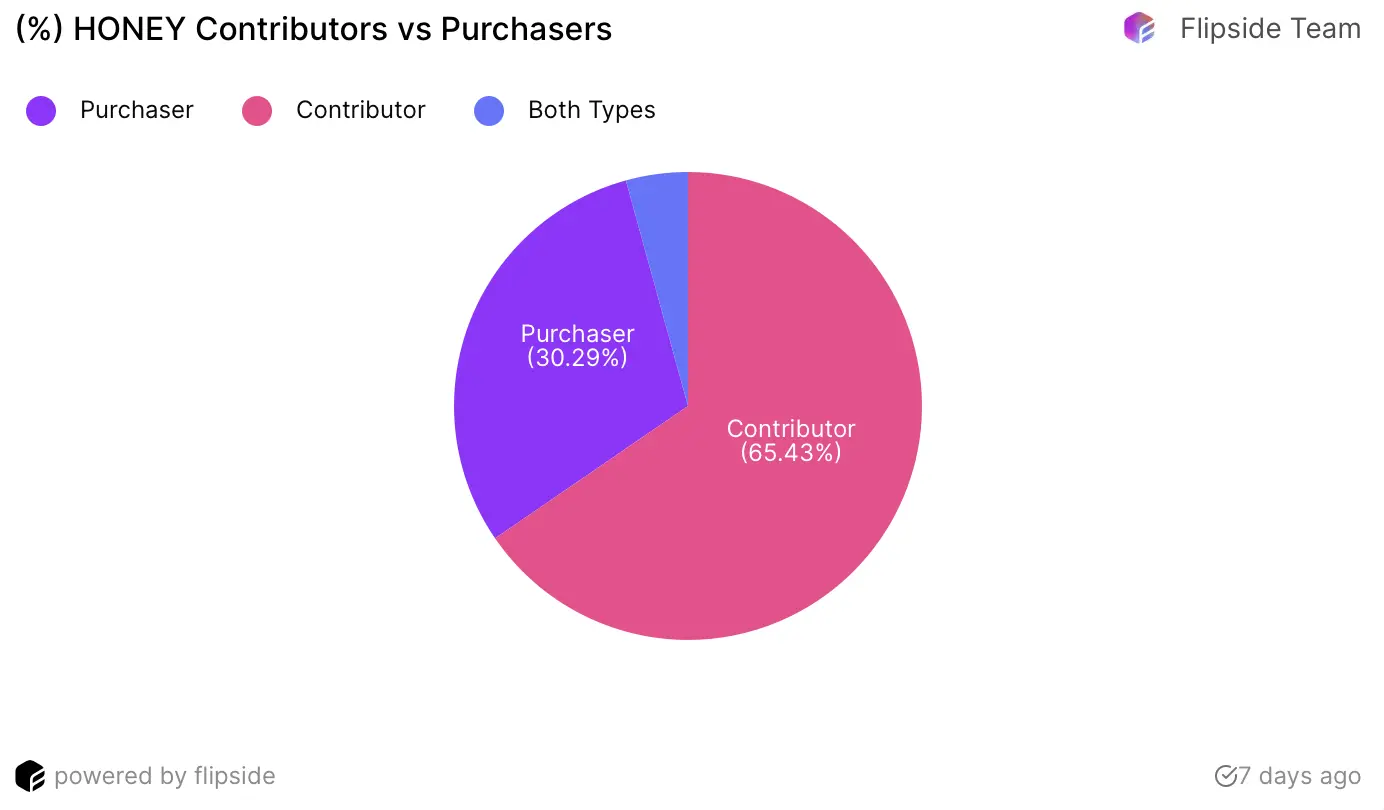Solana DePIN Project Semi-Annual Report: Related Projects Market Value Exceeds 10 Billion, Helium Mobile Attracts Nearly 90,000 Users
Author: Chloe, PANews
Resource-intensive industries such as AI and data storage have become the backbone of real-world infrastructure, and DePIN (Decentralized Physical Infrastructure Networks) is reshaping the blockchain space through its innovative use of existing infrastructure and data-centric business models.
Unlike traditional Internet of Things (IoT), DePIN is not limited to hardware devices themselves but focuses on the value extraction and circulation of data. Through decentralized network architecture and incentive mechanisms, DePIN encourages participants to jointly maintain and contribute data, thereby maximizing the value of data.
As of 2023, data from Messari and DePIN.Ninjia shows that the DePIN ecosystem includes 650 projects with a total market capitalization of $35 billion. These projects span various fields, with 250 projects in computing, 200 in artificial intelligence, 100 in wireless technology, 50 in sensors, 50 in energy, and 25 in services. It is estimated that the current valuation of the DePIN market is close to $2.2 trillion, and it is expected to reach $3.5 trillion in the next four years.
Under a trustworthy and large-scale data infrastructure, DePIN heavily relies on community participation, as the community is the cornerstone of this decentralized hardware network. Many projects, including io.net, are primarily focused on Solana, aiming to leverage Solana's advantages in liquidity, speed, scalability, and cost to achieve value transfer and unlock potential economic value.
As the primary option for deploying DePIN projects, Solana DePIN projects have an FDV (Fully Diluted Valuation) exceeding $10 billion and a market capitalization of over $4 billion.
Recently, Flipside released a semi-annual report on Solana DePIN, and this article by PANews reviews four major DePIN projects in Solana: Render Network, Helium, Hivemapper, and ShdwDrive, analyzing on-chain data and the latest developments of these projects.
Render Network (RNDR)
Render Network provides GPU rendering services through decentralized computing, catering to creators who require substantial GPU computational support for rendering processes. The project offers a distributed GPU rendering platform that allows nodes to provide idle GPUs, enabling creators to utilize them without being limited by hardware conditions, while those who own GPUs can profit from it.
Recently, Render's Octane software was recommended by Apple, highlighting its growth momentum. Since migrating to Solana in November 2023, Render has successfully generated 33 million still images. This amount would take approximately 1,375 days (about 3 years and 9 months) to complete using a single NVIDIA RTX 3090 graphics card (currently a high-end consumer GPU).
The number of active node operators peaked at 19,000 in January 2024, marking a 66.3% increase since the migration. With the growing demand for GPU performance, it is expected that more projects will follow Render's footsteps and build infrastructure on high-performance blockchains like Solana.

Helium Network
The Helium Network wireless project migrated to the Solana blockchain in April this year, allowing decentralized wireless networks to provide connectivity services by utilizing distributed nodes instead of centralized infrastructure, successfully completing a paradigm shift in the communications field.
Currently, Helium not only has dual products for IoT and mobile services. Over the past six months, the Helium ecosystem has shown significant growth, especially in mobile networks. Helium Mobile has attracted nearly 90,000 users in less than a year and has maintained levels above 2023, largely due to Helium Mobile's announcement last year to launch unlimited 5G telecom services across the United States for just $20 per month, officially bringing decentralized network services to the general public.
As shown in the chart below, Helium Mobile's DC burn rate far exceeds that of the IoT network, indicating that the launch of the 5G telecom service has significantly increased network usage and adoption rates.

In addition to general user growth, Helium Mobile has also driven network participation through various incentive measures. The issuance of Mobile Discovery rewards has significantly increased since December 2023, with more users actively participating in network coverage and data collection tasks to earn more MOBILE token rewards, surpassing the growth rate of new users. With the acceleration of 5G deployment, the Helium ecosystem is expected to maintain strong growth in the coming years.
Hivemapper
The decentralized digital mapping network Hivemapper creates real-time 3D maps globally by mapping roads and spatial data, competing with traditional players like Google Maps. In 2022, it launched its native cryptocurrency HONEY to reward users who provide driving data and road images through dashcams.
In less than two years, Hivemapper has mapped over 50 million kilometers of roads, with a total of over 200 million kilometers mapped according to official data. Its incentive model promotes strong community participation, as shown in the chart below, where nearly one-third of HONEY token holders are active contributors. This high level of participation is driven by Hivemapper's incentive model, allowing contributors to earn HONEY by participating in mapping, quality assurance, and training Map AI activities.
As the demand for high-precision map data grows with next-generation applications like autonomous driving, decentralized solutions like Hivemapper are expected to gain more attention and investment.

ShdwDrive
Decentralized storage is a key pillar of the DePIN ecosystem, aimed at providing secure data hosting solutions. ShdwDrive is one of the emerging participants on Solana, designed to offer scalable object storage for Web3 builders.
Although ShdwDrive has not yet launched its mainnet, it has achieved results in its testnet. In a recent test, the network demonstrated the ability to process up to 38,000 transactions per second during peak conditions. The number of SHDW token holders has also been steadily increasing, reaching a peak of 67,000 in March 2024.

The composability of DePIN with other ecosystems is positioned to transform economic systems through data integrity and scalable suite solutions. Therefore, the continuous growth of data volume is inevitable, and projects like ShdwDrive are expected to provide users with more secure and resilient spaces, potentially driving new use cases and innovations across the entire Web3 ecosystem.
What Challenges Do DePIN Projects Need to Address?
In realizing the vision articulated by all projects, the integration of physical devices with blockchain is the primary complex process. The core of DePIN projects lies in building seamless integration between physical devices and data, which requires not only meeting technical requirements but also considering cost-effectiveness and market acceptance. Collaborating with hardware manufacturers of sensors, monitors, etc., and installing DePIN applications on existing devices is the current approach taken by most project parties. However, achieving large-scale device connectivity and data interaction while ensuring data security and privacy remains a pressing challenge.
Secondly, performance bottlenecks and storage consensus are also significant challenges that DePIN projects must face. When millions of devices operate simultaneously on the blockchain, existing blockchain infrastructure struggles to provide sufficient performance support. Although high-performance public chains like Solana offer new options for DePIN projects, they may only be suitable for the Minimum Viable Product (MVP) stage.
Furthermore, the core of decentralization is the verifiability of data, while IoT devices often involve non-deterministic data sources. Ensuring the authenticity and reliability of data requires building robust data traceability and certification systems and using statistical and artificial intelligence techniques to simulate historical data.
DePIN projects are at a development stage full of opportunities, but it is also essential to recognize the challenges posed by data and performance, as well as centralization. For applications like geolocation services, users want to ensure their privacy, while project parties aim to ensure system fairness, leading to a conflict between personal privacy and data security. Therefore, how to continuously push forward in areas such as technological innovation and sustainable business models will determine whether DePIN projects can truly achieve the integration of the physical and digital worlds and usher in a new era of the next-generation internet.









